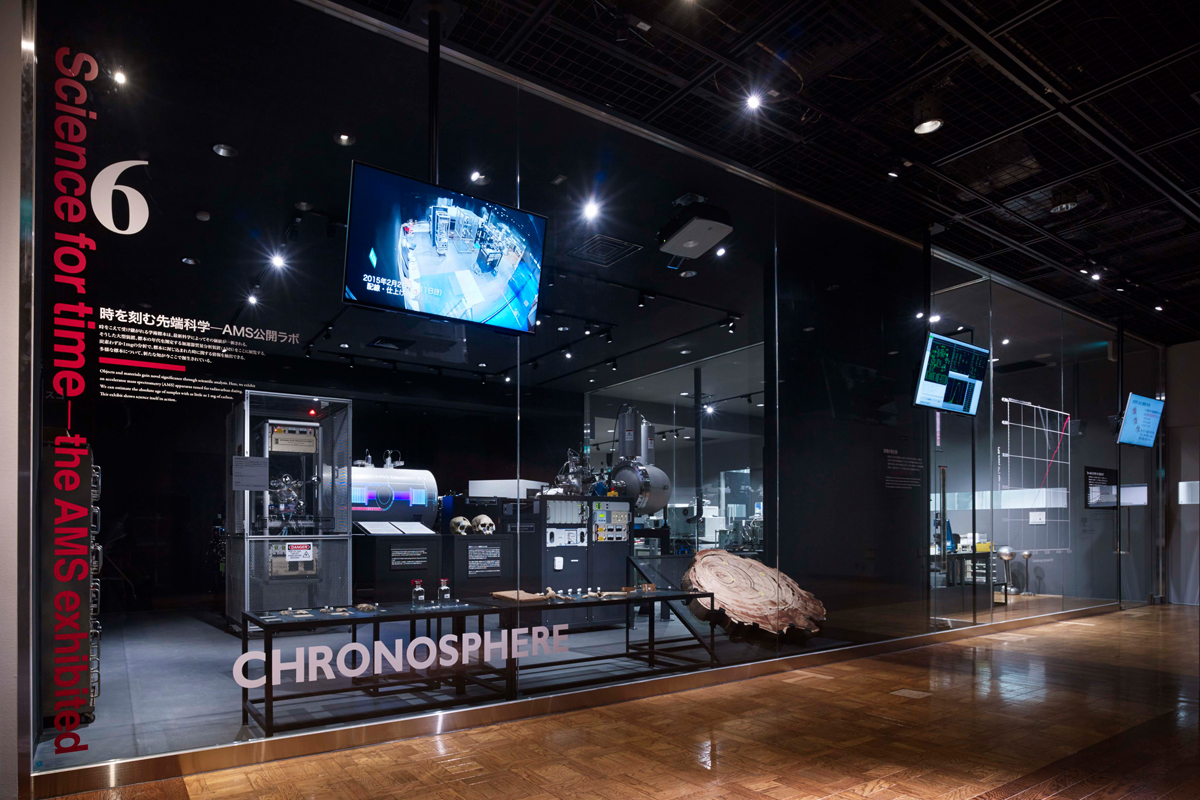
Chronosphere – integration of science for chronology
In the exhibition hall “chromosphere”, we show the accelerator mass spectrometer (AMS) and our academic daily works in the laboratories. Radiocarbon dating was established by an American physicist, Willard Libby in 1940s. He won the Nobel Prize for chemistry in 1960 and this method made a revolution in archaeology. However, the conventional radiocarbon dating has some problems such as temporal change in its production rate affected by solar activity and geomagnetism. When the sun has lower activity, more cosmic rays reached to atmosphere and produced more radiocarbon, resulting in higher radiocarbon contents in organic matters and apparently younger radiocarbon ages.
Recently we have established a database called “calibration curve” to convert radiocarbon ages into more accurate calendar ages. AMS played a major roll for this project, because it can measure very small samples such as a small fossil insect from the lake sediment. We can compare the age counted by “verve” (yearly stripes in sediment) and apparent radiocarbon age in an insect.
Previously we determined radiocarbon contents based on the rate of its decay but now we can count the number of radiocarbon including in 1 mg of carbon by using accelerator. The highly energized carbon ions can be detected by this machine. This advantage of AMS resulted in wider applications of radiocarbon dating for natural and human sciences.

